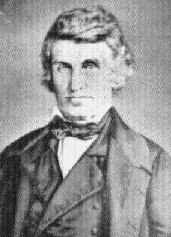 In 1822, an Army surgeon stationed at Fort Mackinac on the upper Michigan peninsula would change medical science. That surgeon, William Beaumont, was introduced to a 19-year-old gunshot victim, an employee of the American Fur Company. The patient, Alexis St. Martin, had multiple wounds, as you might expect from a shotgun. One of his wounds penetrated the stomach. Alexis agreed to let Beaumont experiment with him, allowing the surgeon to insert a six-inch tube into his stomach by way of an opening to the outside.
In 1822, an Army surgeon stationed at Fort Mackinac on the upper Michigan peninsula would change medical science. That surgeon, William Beaumont, was introduced to a 19-year-old gunshot victim, an employee of the American Fur Company. The patient, Alexis St. Martin, had multiple wounds, as you might expect from a shotgun. One of his wounds penetrated the stomach. Alexis agreed to let Beaumont experiment with him, allowing the surgeon to insert a six-inch tube into his stomach by way of an opening to the outside.
Beaumont was able to directly observe the release of stomach secretions in response to Alexis’ eating different foods. He was also able to collect stomach contents, place them in glass tubes, and observe how much food was digested and the length of time it took for the food to break down. For centuries, many people believed that the stomach was hot and somehow “cooked” the food, acting as a fermenting vat or grinding mill. Beaumont, with the help of Alexis, proved that those superstitions were false.
Medicine in the early nineteenth century was primitive. Doctors did not realize the importance of cleanliness. For the pain of rheumatism, Beaumont and fellow doctors prescribed opium, wood resin, and turpentine. Despite such uninformed and primitive medicine, Beaumont proudly claimed that none of his 200+ patients died.
